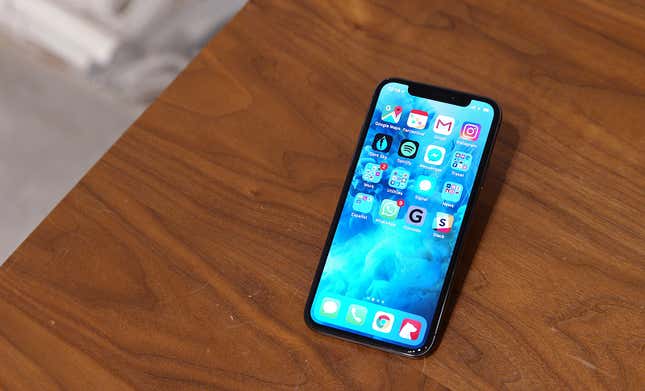
Now that notches are popping up on just about every new smartphone screen, Apple’s next iPhone will need some new tricks to stand out from its competitors. But if a report from Bloomberg is true, instead of coming up with entirely new ideas, it seems Apple may try to crib some features from a handful of five-year-old devices.
Bloomberg claims that two new features Apple is exploring for use on a future iPhone (that’s maybe two or three years away) include “touchless gesture control” that would let a you manipulate the phone from an unspecified distance, and displays “that curve inward gradually from top to bottom,” as opposed to the sloping edges found on phones like the Galaxy S9. Based on Bloomberg’s descriptions, these feature ideas may not actually be entirely new, but instead a revival of tech from the phones of yesteryear.
For those who have followed the evolution of smartphones for awhile, you might recall that non-touch gestures are something that Samsung debuted on the Galaxy S4 in 2013. Back then, Samsung called its features Air View and Air Gesture, which allowed you to do things like hover your hand over a tiny sensor in the bezel to wake the screen and view notifications, or wave your hand across the screen to switch between tabs or flip through photos.
Samsung wasn’t the only company to try something like this either. On the 2015 Moto X Pure, Motorola installed its own gesture controls that would let you wave your hand over the screen to turn the display on or off, in addition to a selection of traditional gestures like holding the phone and making a chopping motion to turn on the flashlight, the latter of which is still available on more recent Moto handsets via Moto Actions.
As for that rumored, inwardly curving screen, Samsung did that first on the Galaxy Round in 2013 (only released in South Korea), which was then followed by the original LG G Flex in 2014, and then again on the G Flex 2 in 2015. The G Flex even went one step further, because on top of having a concave design that LG says made the screen feel more natural and soothing to touch (which it kinda did), the screens themselves had a little flex to them, which helped the phones endure a life spent stuffed inside users’ pockets.
In the years since the Galaxy Round, S4, and G Flex debuted, however, both Samsung and LG have largely given up on the technology they pioneered five years ago. And if Apple could revive those ideas and potentially make them useful, that might be kind of nice, just so long as the company doesn’t try to take credit for inventing the tech. After all, sooner or later, everything old is new again.